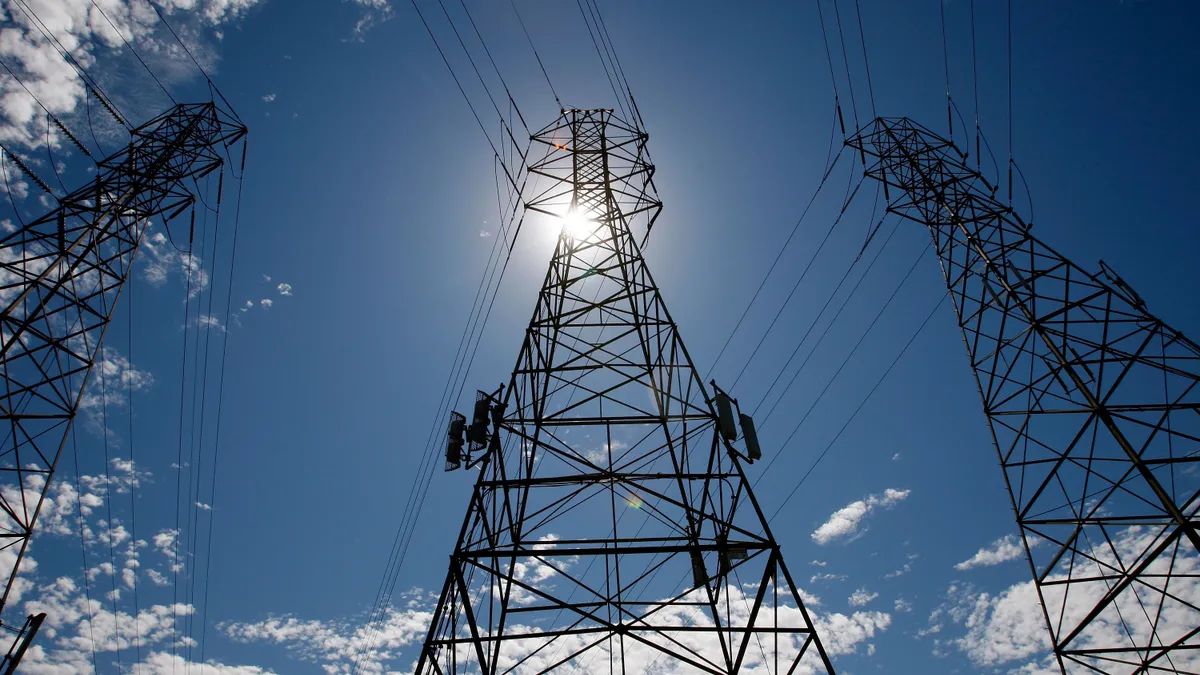Dive Brief:
- California regulators on Friday issued a suite of proposals aimed at shoring up the power grid during climate-driven heat waves by beefing up demand response efforts and increasing supply during critical times of the day.
- The proposed decisions, scheduled for a full commission vote on Dec. 2, would among other things adopt a new demand response program to incentivize residential customers to reduce energy use during critical times, implement a new energy efficiency program for the next two summers, and direct utilities to collectively procure 2,000 MW to 3,000 MW of demand and supply-side resources, also for the summers of 2022 and 2023.
- The proposals reflect an "all hands on deck" approach by regulators, "trying to find additional capacity wherever they can — whether it's demand reduction or additional supply," said Seth Hilton, partner with Stoel Rives.
Dive Insight:
The California Public Utilities Commission (CPUC) has been implementing multiple measures to help ensure grid reliability during the summer months, following a record-breaking heatwave in the state in 2020 that forced the California Independent System Operator to initiate outages.
In the wake of the blackouts, the agency opened a proceeding to ensure adequate energy supply for the summer of 2021, and then extended that effort to the summers of 2022 and 2023. CPUC analysis has indicated that between 2,000 MW to 3,000 MW of new resources will help address grid reliability during extreme circumstances in 2022 and 2023, the commission noted in a press release.
The proposals being considered by the commission include doubling the compensation rate of its emergency load reduction program to $2 per kWh, implementing a $22.5 million smart thermostat incentive program that will help customers reduce their use of air conditioners when needed, as well as doubling down on energy efficiency programs.
Supply-side proposals include the deployment of four new storage microgrid projects by San Diego Gas & Electric (SDG&E), providing a total capacity of 160 MWh. In addition, regulators are considering directing Pacific Gas & Electric, Southern California Edison and SDG&E to procure additional resources of 900 MW to 1,350 MW, 900 MW to 1,350 MW and 200 MW to 300 MW respectively.
However, California could face challenges in getting supply-side resources online within the required timeframe, especially for 2022, Stoel Rives' Hilton said, due in part to interconnection timelines.
"Speeding up permitting isn't going to help if a project isn't going to be interconnected anyway," he noted.
Regulators in California also have their eye on longer-term threats to reliability. This summer, the commission advanced an 11.5 GW procurement order — its largest such order to date — that will help ensure grid reliability following the expected retirement of the Diablo Canyon nuclear plant and a suite of natural gas plants. Under that decision, power providers are set to bring online 2,000 MW of resources by 2023, an additional 6,000 MW by 2024, another 1,500 MW by 2025 and a last 2,000 MW installment by 2026.















